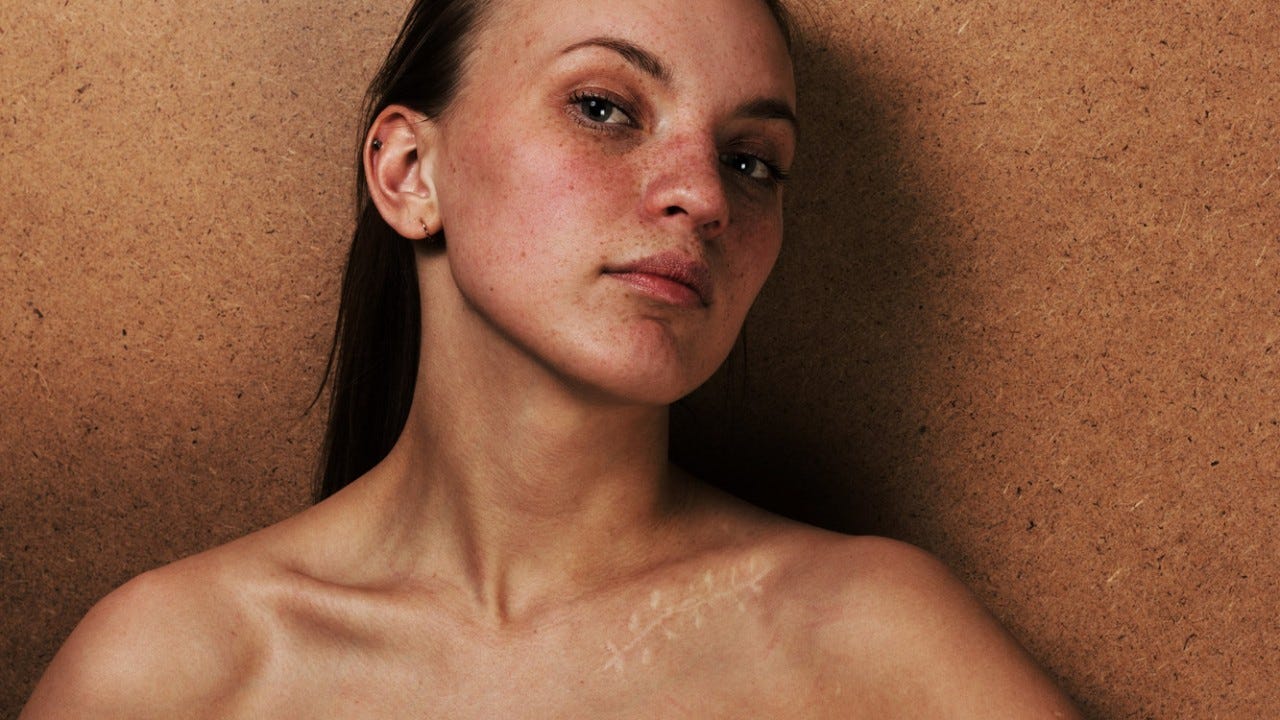10 tips for scar care
A lot of patience and a few tricks help to reduce these scars. Tips for the right scar care.

When we’ve had an injury, scars often remain to remind us of it our whole life long. Scars can not only look ugly, they can also impact on movement and hurt a lot too.
Why do scars appear?
Scars develop when the skin heals after a deep wound. The body – luckily – produces collagen to repair the injured tissue. However, the way collagen is produced is different from normal skin formation and results in a visible change: a scar. The size, shape and colour of the scar depend on various factors, for example, the type of injury, its location on the body, genetic factors and the patient’s age. Dr Björn Walter, head of the Skin Tumour Centre and deputy senior physician at the Clinic for Hand and Plastic Surgery at Winterthur Cantonal Hospital, treats many different types of scars and knows what’s important when it comes to scar care.
Which scars are good and which bad?
“There are two factors: aesthetics and functionality,” explains Walter. “A good scar is flat, practically invisible and doesn’t hurt. A bad scar is conspicuous, tight, pulls and is irritating when it runs over a joint or distorts an eyelid, for example.” Fortunately, scars on the face usually always heal well. In contrast, wounds on the torso, back or in the middle of the chest heal the worst. Here, the scars are often thick and wide and develop excess connective tissue. These are known as hypertrophic scars. Pathologically proliferating scar tissue, known as keloid, is rare. In such cases, the scar expands beyond the boundaries of the original wound and continues to grow and grow. Retracted scars, the opposite of a bulge, also occur. In this case, as the wound heals, it grows inwards and adheres to the underlying layers of tissue. This happens when the fatty tissue under the wound has decreased, for example, due to surgery.
10 tips for scar care
-
Be patient
Bear in mind that scars need time to heal and fade. When a wound is freshly sutured, it’s usually less noticeable than when the skin begins to heal. This is when cuts and stitches start to turn red and thick. But this is normal and you shouldn’t worry. “The biggest mistake patients make is to be impatient. When a patient comes to me after five weeks seeking an operation to correct a scar, I try to reassure them.”
Surgery isn’t advisable at an early stage, because the scar can continue to change in unpredictable ways – even after surgical scar correction. “And maybe they end up with an even bigger scar than before,” warns the specialist. The good news is that the appearance of scars can be changed with a lot of patience and perseverance.
But when should you see a doctor? Walter advises that you should seek medical advice if the scar is painful, very itchy or you’re generally unsure whether the growth is developing too much. But if the doctor recommends patience, you should follow their advice.
-
Stop smoking before surgery
If you’re faced with a major operation, there’s little you can do to prepare your skin, but you can help promote the healing process.
The best tip is to stop smoking for as long as possible. Tobacco reduces the oxygen supply, which hinders wound healing and increases the risk of complications after surgery. This may then also have an effect on scarring.
-
The sooner you take care of fresh scars, the better
You should start treating a scar once the wound has healed on the surface. “External factors can only influence the look of a scar as long as it’s red and active. Once a wound has fully matured, its appearance can usually only be changed through an operation,” explains Björn Walter.
Self-test: if the red scar goes white under pressure, it’s still active. If its colour remains the same and doesn’t change over the course of several weeks, the scar has matured.
How long a wound needs to mature completely varies: “In the face, scars are often matured after two or three months. Large surface scars from burns, which may even involve skin grafts, can mature for up to two years, even though the wound healed a long time ago,” says Walter.
-
Daily care routine with cream, ointment, plasters
Silicon has a positive impact on the appearance of scars, which is why it’s found in most scar creams and plasters that you find in the pharmacy. Vitamin E, aloe vera and collagen can also help. Apply the cream to the scar several times a day and massage it in.
Depending on where on the body the scar is, the size of the scar and time of year, plasters may be more effective than creams as they allow the active ingredients to be absorbed into the skin for longer. However, this can be unpleasant in summer when the skin sweats more. And who really wants to wear a plaster on their nose for several weeks?
-
Scar massages to improve elasticity
“When a wound develops, the body wants to close it as quickly as possible by releasing collagen into it in a disorderly fashion. This collagen net can be supported by massage while the scar is maturing,” explains Walter. Massage stimulates the metabolism and improves blood flow to the skin, which makes it softer and more elastic. This “unsticks” the tissue and releases tension in the skin.
It’s best to rub the scar vigorously over a bone or roll it back and forth between two fingers. Scar cream can be used during the massage at least twice a day.
-
Wear loose clothing
Mechanical stresses such as traction or stretching stress the scar tissue and should be avoided. Vigorous sport is therefore not recommended during the first four to eight weeks of wound healing. And: it is best to avoid tight, abrasive clothing. This may not only be uncomfortable, but can also irritate and chaff the tissue that is being renewed.
-
Caution with direct sunlight
“Protect yourself from the sun, because the rays change the pigments in the skin, which may cause the scar to be too pale or too dark later on,” says the doctor. And new scar tissue is especially sensitive to direct sunlight.
Tip: cover your skin or apply sun cream with a high sun protection factor daily. These extra sun protection measures should be followed for around a year.
-
Boost healing through compression
“Applying even pressure to the scar over a large area is medically effective and helps ease pain and itching while the skin is healing. With burns, for example, patients are given compression sleeves or suits that they sometimes have to wear for up to six months,” explains Dr Walter.
Compression causes the collagen tissue to arrange itself parallel to the skin surface, leaving the scar softer and more flexible, minimising its thickness and thus reducing movement and functional limitations.
Patience is key here, too. For successful scar care, it is important to wear the compression garment consistently day and night for a longer period of time.
-
Avoid stress, get plenty of sleep
“Experience at our practice clearly shows that stress has a negative impact on all illnesses and hinders recovery. That’s why the mind is also important in the process of healing scars,” says Walter. It’s important to have a positive attitude, give the body time to heal and get enough sleep.
“Patients have to learn that the scar will remain and is a part of their body and their history. Accepting this is an important part of the healing process,” says Walter.
-
Last resort: surgery
Dermatologists offer a number of treatments, e.g. laser resurfacing, for minor aesthetic scar correction. “It often takes longer than patients expect before surgery is an option. You usually have to reckon with around a year," says Björn Walter. But: "If creams, massages and compression don't help and the scar becomes increasingly active, I inject cortisone."
Cutting off the growth is also possible as a last resort. Then the wound is usually subject to radiation like a tumour – albeit with a weaker dose. If scars impair functionality, e.g. if they fuse with nerves or rub painfully on bones, surgery is recommended more quickly. In this case, injecting fat can help cushion the tissue and ease the pain.


